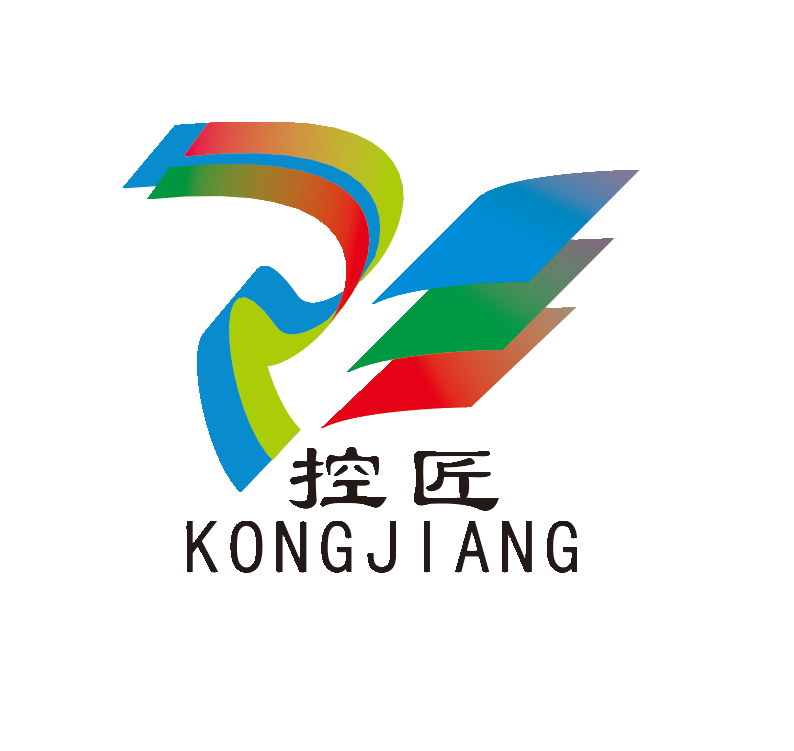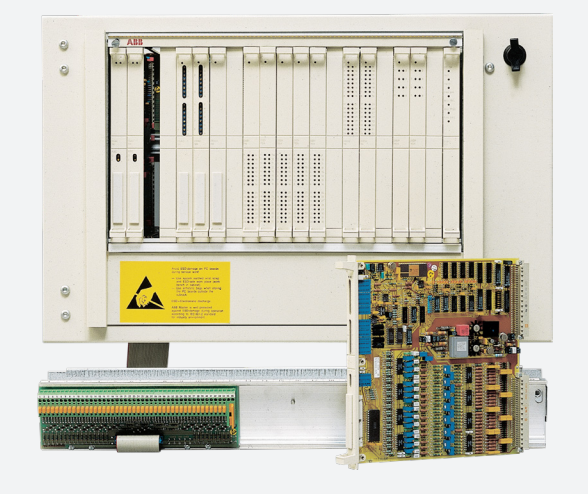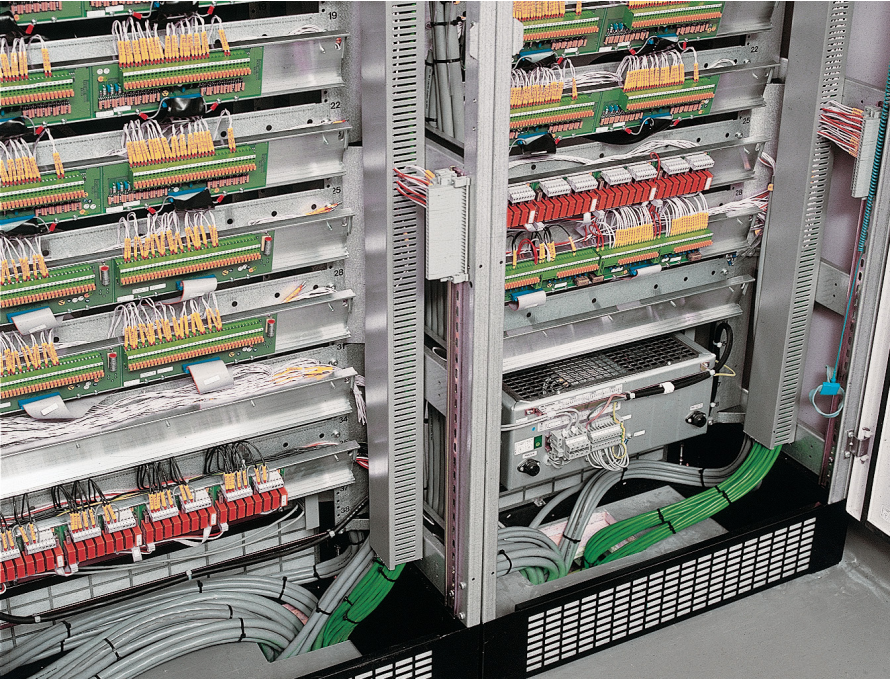

+086-15305925923
K-WANG
Service expert in industrial control field!
Product
Article
NameDescriptionContent
Adequate Inventory, Timely Service
pursuit of excellence


Ship control system
Equipment control system
Power monitoring system
Current position:
新闻动态
newS
Brand
ABB Advant® Master S100 I/O system
ABB Advant® Master S100 I/O system
ABB Advant® Master S100 I/O system
The S100 I/O process interface
modules for Advant Controller
400 series process controllers
come with connection units,
simplifying cable termination and
keeping noise and destructive
spikes away from the central
electronics.
S100 I/O is the central process interface for Advant
Controller 400 series process controllers. Thanks to
built-in cablemarshalling facilities and parallel
communication with the host controller, it is the
right choice for centralized I/O systems and
high-speed applications.
The range of process I/O modules is complete,
consisting of general purpose digital and analog
inputs and outputs and special interfaces for special
tasks. These specials include pulse counting,
frequency measuring, positioning, motor speed
control and communication with other controllers.
All I/O modules provide simple interfacing, accurate -
yet fast - control, and easy integration of individual
loops into a comprehensive plant-wide control
and supervision system.
The interface modules connect to the process
through screw terminals on connection units
normally installed inside, at the back of the cabinet.
This solution keeps noise and destructive voltage
spikes away from the central electronics and
provides a neat and tidy process interface that is
easy to maintain.
Prefabricated cables interconnect modules with
connection units. The cables come in different
lengths, permitting termination and marshalling
in controller cabinets, in adjacent cabinets, or in
cabinets a greater distance away.
There are connection units that support signaloriented or device-oriented field wiring. The former
means that field wires with the same electrical
characteristics (e.g. all 24 V d.c. inputs) are grouped
and terminated together, the latter that field wires
to/from the same field devices are grouped and
terminated together. The combination means
maximum installation flexibility.

On-board processing capabilities
The process I/O modules are “intelligent” in the sense
that module-related signal and data processing is
performed on board as opposed to centrally, by the
CPU of the host controller. Time tagging of events,
filtering and gain control are some examples of
board-level tasks. This functional distribution improves
real-time performance and reliability of the system
as a whole and maintains processing capacity when
the system is expanded.
Comprehensive self-diagnostics
Comprehensive self-diagnostics continuously monitor
the modules and report any errors through LEDs on
the module fronts and through alarm messages and
indications to process operator stations.
Malfunctioning inputs can be disabled and simulated
by manual entry while failing outputs are deactivated
or driven to a predetermined safe state automatically.
All I/O modules can be replaced while the system is in
service. Some modules can even be arranged, trans parently into dually redundant configurations
forenhanced availability.
High disturbance immunity
All modules conform to the highest standards of
electromagnetic noise immunity and satisfy the
requirements of the EU directives 2014/30/EU and
2014/35/EU. For the above reasons, S100 I/O is likely
to be the best help you can get for putting your con trol system in touch with your field devices.

Analog inputs
±10 V/±20 mA
• 16 ch., differential, 12 bits + sign resolution, CMV ≤ 50 V,
CMRR > 100 dB (at 50 Hz), (DSAI 130A)
0…+10 V/0…+20 mA
• 32 ch. (DSAI 133A1), single-ended, 12 bits resolution
-100…+320/-200…+640°C
• 31 measuring + 1 reference ch., Pt100, 3-wire, 12 bits + sign
resolution, (DSAI 146)
Thermocouples
• 14 measuring, 2 reference + 1 compensation ch., measuring
ranges B, C, E, J, K, R, S and T with grounded or floating output
signals, 12/13 bits + sign resolution, CMV ≤ 16 V,
CMRR > 100 dB (at 50 Hz), (DSAI 155A)
Analog outputs
±10 V/±20 mA
• 8 ch., 12 bits + sign resolution, galvanically isolated, (DSAO 120A)
0…20 mA
• 16 ch., 12 bits resolution, (DSAO 130A)
Analog inputs/outputs
0…+10 V/0…+20 mA
• 8 input ch., single-ended, 12 bits resolution;
• 8 output ch., 12 bits resolution (DSAX 110A1)
Digital inputs
24 V d.c.
• 32 ch. in 4 groups, optoisolated, read by scanning or interrupts
(DSDI 110AV12/DSTD 190V1,
DSDI 110AV12/DSTD 150A, with screw terminals or
DSDI 110AV12/DSTD 195, galvanic isolated)
24/48 V d.c.
• 32 ch. in 4 groups, optoisolated, read by scanning or interrupts
(DSDI 110AV12/DSTD 196P)
48 V d.c.
• 32 ch. in 4 groups, optoisolated, read by scanning or interrupts
(DSDI 120AV12/DSTD 190V1 or
DSDI 120AV12/DSTD 150A, with screw terminals)
110 V d.c. or 120 V a.c
• 32 ch. in 4 groups, optoisolated, read by scanning or interrupts
(DSDI 110AV12/DSTD 197)
230 V a.c.
• 32 ch. in 4 groups, optoisolated, read by scanning or interrupts
(DSDI 110AV12/DSTD 198)
Digital outputs
24…250 V a.c. or d.c.
• 32 ch., (DSDO 115A/DSTD 108P), relay contacts.
Relay data: Load current; max. 3 A, min 0,1 A at 24 V d.c. or
2,5 VA a.c. Breaking capacity a.c max 720 VA at cos Φ > 0.4;
d.c. max 44 W at L/R <40 ms.
• 32 ch., (DSDO 115A/DSTD 108LP), relay contacts.
Relay data: Load current; max. 200 mA, min 1 mA, 0.05 VA. Breaking capacity a.c max 5 VA at cos Φ > 0,4; d.c. max. 5 W at L/R
<40 ms.
24 V d.c.
• 32 ch., short-circuit-proof transistor, max. 500 mA, (DSDO 115A)
• 32 ch., (DSDO 115A/DSTD 109P) short-circuit-proof transistor,
max. 2 A
Pulse counting and positioning
5/12/24 V d.c.
• 12 ch., max. 10 kHz, (DSDP 150)
Complete interface (DSDP 140A) for one positioning loop,
consisting of:
• Pulse inputs: 3 (A, B and STROBE), ±15 mA, max. 80 kHz DI/DO:
24 V d.c. DO max. 150 mA AO: ±10V/±20 mA, 11 bits resolution
Complete interface (DSDP 170) for
• 4 position transducers, each circuit consisting of: Pulse inputs:
3 (A, B and STROBE), 5/12/24 V or ±15 mA d.c., max. 2.5 MHz
DI/DO: 24 V d.c. DO max.150 mA
Digital speed control of motors
Complete interface (DSDC 111) for one d.c. motor, consisting of:
3 pulse inputs for A, B and STROBE
1 DI, 24 V d.c.
1 DO, 24 V, 150 mA d.c.
1 AO, ±10 V/±20 mA, 12 bits resolution
1 Supports transparent dual redundancy.
2 Digital Input Modules with Event detection.
- YOKOGAWA
- Energy Access
- Renewable Integration
- Energy Subsidies
- Energy and Water
- Net zero emission
- Energy Security
- Critical Minerals
- A-B
- petroleum
- Mine scale
- Energy and Gender
- Covid-19
- man-machine
- Reliance
- ADVANCED
- SEW
- ProSoft
- WATLOW
- Kongsberg
- FANUC
- VSD
- DCS
- PLC
- Sewage treatment
- cement
- Yaskawa
- Woodward
- BOSCH Rexroth
- MOOG
- General Electric
- American NI
- Rolls-Royce
- CTI
- Honeywell
- EMERSON
- Automobile market
- xYCOM
- Motorola
- architecture
- Industrial information
- New energy
- electricity
- Construction site
- HIMA
- ABB
- Rockwell
- Schneider Modicon
- Siemens
- MAN
- GE
- TRICONEX
- Control Wave
- ALSTOM
- AMAT
- STUDER
- KONGSBERG
- MOTOROLA
- DANAHER MOTION
- Bentley
- Galil
- EATON
- MOLEX
- Triconex
- DEIF
- B&W
- ZYGO
- Aerotech
- DANFOSS
- KOLLMORGEN
- Beijer
- Endress+Hauser
- schneider
- Foxboro
- KB
- REXROTH
- YAMAHA
- Johnson
- Westinghouse
- WAGO
- TOSHIBA
- TEKTRONIX
- BENDER
- BMCM
- SMC
51
-
GE Hydran M2-X Enhanced Monitoring
-
ABB REG316 1mrk000809-GA Numerical Generator Protection
-
ABB RED670 1MRK004810 Line differential protection
-
GE SR750-P5-G5-S5-HI-A20-R-E Feeder protection system
-
ABB PFTL301E-1.0KN 3BSE019050R1000 PillowBlock Load cells
-
Kollmorgen S33GNNA-RNNM-00 - Brushless Servo Motor
-
Kollmorgen 6sm56-s3000-g-s3-1325 - Servo Motor
-
Kollmorgen AKM52K-CCCN2-00 - Servo Motor
-
Kollmorgen PSR3-230/75-21-202 - Power Supply
-
Kollmorgen akm24d-anc2r-00 - Servo Motor
-
Kollmorgen AKM22E-ANCNR-00 - Servo Motor
-
Kollmorgen S60300-550 - Servo Drive
-
Kollmorgen B-204-B-21 - Servomotor
-
Kollmorgen AKM21E-BNBN1-00 - Servo Motor
-
Kollmorgen TT2953-1010-B - DC Servo Motor
-
Kollmorgen pa8500 - Servo Power Supply
-
Kollmorgen BDS4A-210J-0001-207C2 - Servo Drive
-
Kollmorgen TTRB1-4234-3064-AA - DC Servo Motor
-
Kollmorgen MH-827-A-43 - Servo Motor
-
Kollmorgen AKM24D-ACBNR-OO - Servo Motor
-
Kollmorgen 00-01207-002 - Servo Disk DC Motor
-
Kollmorgen AKM21C-ANBNAB-00 - Servo Motor
-
Kollmorgen PSR3-208/50-01-003 - Power Supply
-
Kollmorgen 6SM56-S3000 - Servo Motor
-
Kollmorgen DBL3H00130-B3M-000-S40 - Servo Motor
-
Kollmorgen 6SN37L-4000 - Servo Motor
-
Kollmorgen AKM65K-ACCNR-00 - Servo motor
-
Kollmorgen 6SM56-L3000-G - Servo Motor
-
Kollmorgen AKMH43H-CCCNRE5K - Servo Motor
-
Kollmorgen PSR4/52858300 - Power Supply
-
Kollmorgen KBM-79H03-E03 - Direct Drive Rotary Motor
-
Kollmorgen AKM33E-ANCNDA00 - Servo Motor
-
Kollmorgen U9M4/9FA4T/M23 - ServoDisc DC Motor
-
Kollmorgen AKM13C-ANCNR-00 - Servo Motor
-
Kollmorgen AKM43L-ACD2CA00 - Servo Motor
-
Kollmorgen AKM54K-CCCN2-00 - Servo Motor
-
Kollmorgen M-605-B-B1-B3 - Servo Motor
-
Kollmorgen AKD-P00606-NBAN-0000 - Rotary Drive
-
Kollmorgen 6SM-37M-6.000 - Servo Motor
-
Kollmorgen A.F.031.5 - Sercos Interface Board
-
Kollmorgen 918974 5054 - Servo PWM
-
Kollmorgen U12M4 - ServoDisc DC Motor
-
Kollmorgen AKD-B00606-NBAN-0000 - Servo Drive
-
Kollmorgen MV65WKS-CE310/22PB - Servo Drive
-
Kollmorgen 65WKS-CE310/22PB - Servo Drive
-
Kollmorgen EM10-27 - Module
-
Kollmorgen S64001 - Servo Drive
-
Kollmorgen CR03200-000000 - Servo Drive
-
Kollmorgen 6SM57M-3000+G - Servo Motor
-
Kollmorgen BDS4 - Servo Drive
-
Kollmorgen AKD-P00306-NBEC-000 - Servo Drive
-
Kollmorgen AKD-B01206-NBAN-0000 - Servo Drive
-
Kollmorgen STP-57D301 - Stepper Motor
-
Kollmorgen 6SM37L-4.000 - Servo Motor
-
Kollmorgen 44-10193-001 - Circuit Board
-
Kollmorgen PRDR9SP24SHA-12 - Board
-
Kollmorgen PRD-AMPE25EA-00 - Servo Drive
-
Kollmorgen DBL3N00130-0R2-000-S40 - Servo Motor
-
Kollmorgen S406BA-SE - Servo Drive
-
Kollmorgen AKD-P00607-NBEI-0000 - Servo Drive
-
Kollmorgen AKD-P01207-NBEC-0000 - Servo Drive
-
Kollmorgen CR03550 - Servo Drive
-
Kollmorgen VSA24-0012/1804J-20-042E - Servo Drive
-
Kollmorgen N2-AKM23D-B2C-10L-5B-4-MF1-FT1E-C0 - Actuator
-
Kollmorgen 04S-M60/12-PB - Servo Drive
-
Kollmorgen H33NLHP-LNW-NS50 - Stepper Motor
-
Kollmorgen A-78771 - Interlock Board
-
Kollmorgen AKM43E-SSSSS-06 - Servo Motor
-
Kollmorgen AKD-P00607-NBEC-0000 - Servo Drive
-
Kollmorgen E21NCHT-LNN-NS-00 - Stepper Motor
-
Kollmorgen cr10704 - Servo Drive
-
Kollmorgen d101a-93-1215-001 - Motor
-
Kollmorgen BDS4A-203J-0001-EB202B21P - Servo Drive
-
Kollmorgen MCSS23-6432-002 - Connector
-
Kollmorgen AKD-P01207-NACC-D065 - Servo Drive
-
Kollmorgen CK-S200-IP-AC-TB - I/O Adapter and Connector
-
Kollmorgen CR10260 - Servo Drive
-
Kollmorgen EC3-AKM42G-C2R-70-04A-200-MP2-FC2-C0 - Actuator
-
Kollmorgen BDS5A-206-01010-205B2-030 - Servo Drive
-
Kollmorgen s2350-vts - Servo Drive
-
Kollmorgen AKM24D-ANC2DB-00 - Servo Motor
-
Kollmorgen E31NCHT-LNN-NS-01 - Stepper Motor
-
Kollmorgen PRD-0051AMPF-Y0 - Servo Board
-
Kollmorgen TB03500 - Module
-
Kollmorgen 60WKS-M240/06-PB - Servo Drive
-
Kollmorgen M21NRXC-LNN-NS-00 - Stepper Motor
-
Kollmorgen H-344H-0212 - Servo Motor
-
Kollmorgen MCSS08-3232-001 - Connector
-
Kollmorgen AKM33H-ANCNC-00 - Servo Motor
-
Kollmorgen PA-2800 - Power Supply
-
Kollmorgen MTC308C1-R1C1 - Servo Motor
-
Kollmorgen PRDR0091300Z-00 - Capacitor Board
-
Kollmorgen BDS4A-206J-0024/01502D79 - Servo Drive
-
Kollmorgen S20330-VTS - Servo Drive
-
Kollmorgen S20250-CNS - Servo Drive
-
Kollmorgen SBD2-20-1105-WO - Servo Drive Board
-
Kollmorgen M405-C-A1--E1 - Servo Motor
-
Kollmorgen PRD-PB805EDD-00 - Servo Drive
-
Kollmorgen 6SM57S-3.000-J-09-HA-IN - Servo Motor
-
Kollmorgen AKM33H-ANCNDA-00 - Servo Motor
-
Kollmorgen PCB-00030200-04 - PCB
-
Kollmorgen H22SSLB-LNN-NS-02 - Stepper Motor
-
Kollmorgen BJRL-20012-110001 - Module
-
Kollmorgen BDS4A-206J-0001404A - Servo Drive
-
Kollmorgen H-342-H-0802 - Servo Motor
-
Kollmorgen CR10561 - Servo Drive
-
Kollmorgen BDS5A-206-00010-205B2-030 - Servo Drive
-
Kollmorgen BDS5A-206-00010-207B-2-030 - Servo Drive
-
Kollmorgen mcss08-3224-001 - Connector
-
Kollmorgen M-207-B-23-B3 - Servo Motor
-
Kollmorgen PRD-0041200Z-S0 - Encoder/Resolver Card
-
Kollmorgen MH-225-G-61 - Motor
-
Kollmorgen MT308B1-T1C1 - Servo Motor
-
Kollmorgen BDS4A-240J-0001604C83 - Servo Drive
-
Kollmorgen 6SM57-S-3000 - Servo Motor
-
Kollmorgen N-T31V-15-5B-6-MF3-FT1E-C251 - Actuator
-
Kollmorgen PRD-0051AMPA-X0 - Servo Board
-
Kollmorgen CF-SS-RHGE-09 - Cable
-
Kollmorgen DIGIFAS7204 - Servo Drive
-
Kollmorgen S30101-NA - Servo Drive
-
Kollmorgen DIGIFAS7201 - Servo Drive
-
Kollmorgen PRD-0051AMPA-Y0 - Servo Board
-
Kollmorgen AKM23D-EFCNC-00 - Servo Motor
-
Kollmorgen SE10000 - Servo Drive
-
Kollmorgen PSR4/5A-112-0400 - Power Supply
-
Kollmorgen AKM31H-ANCNC-01 - Servo Motor
-
Kollmorgen M-203-B-93-027 - Servo Motor
-
Kollmorgen CP-SS-G1HE-05 - Connector




